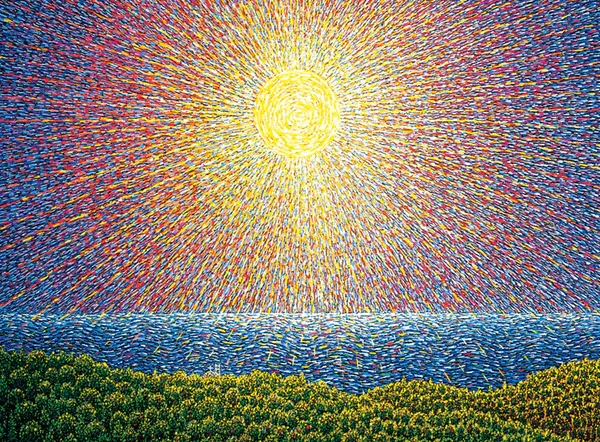meditation 14
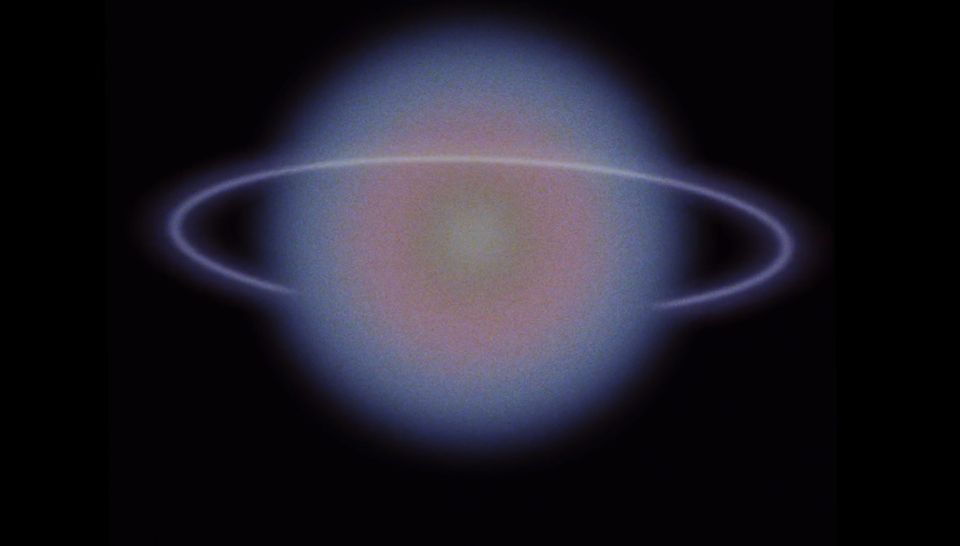
Placing your heart
within your head . . .
and closing your eyes . . .
allow the light that spontaneously appears . . .
and merge with it . . .
You merge into The Light.
▼▼⛛▼⛛▼▼
Notes:

Starry Starry Nights: Phosphenes & Seeing without Light
Their appearances have been described as subjective haloes, their capering dances like those of St. Elmo's fire, the fluidity of their improvisations as forms flirting with formlessness, vaporous improvisations of clouds, sparks flitting about like constellations of fireflies. They also assume the forms of self-styled yantras and mandalas.
Poet Adrian Brinkerhoff compares phosphenes to . . .
. . . the moiled flocking
Of startled rookeries, or flak in air,
Or blossom-fall . . .
Seemingly sovereign in their star-spangled domain of self-illumination, they may resemble bombs bursting in air . . .
Brinkerhoff advises . . .
In the strong dream by which you have been chosen,
To . . . answer to your suppler self, that nature
able to bear the thrush’s quirky glee . . .
To stumble a few steps and sink to sleep
In the same clearing where, in the old story,
A holy man discovered Vishnu sleeping,
Wrapped in his maya, dreaming by a pool
On whose calm face all images whatever
Lay clear, unfathomed, taken as they came.
This verse of scripture welcomes us to fathom those images.

Phosphenes, though appearing in every culture, tend to assume a fairly standard repertoire of forms: spirals, circles, grids, triangles, stars, etc. . . .
The word phosphene was coined from the Greek phos (light) and phainein (to show): thus, light appears within the eye, itself, in the absence of external light. Known as nimitta in some Buddhist realms, phosphenes are valorized variously.
Phosphenes may appear when people (and other mammals?) "see stars" as a result of pressure or other disturbances affecting the optic nerves. They may result from sneezing, orgasm, or closing one's eyes tightly. Or they be occasioned by a sharp contrast in luminosity: when, for instance, one turns off one's computer at night in a dark roo, they may appear first as an afterimage of the bright computer screen, before morphing into their typical repertoire of forms.
They may also bloom into one's darkened visual field when sitting with eyes closed in a dark room, meditating, approaching the point where duality flirts with Oneness, when one is transcending, just as one's sense of individuality begins to melt away.
They may arrive when one is dancing through one's tribal initiation ritual after having ingested amanita or dactura or some other hallucinogen (not recommended).
They may appear as self-luminous spirals, triangles, zigzags, stars, mandala- and yantra-like forms, which do not remain static but improvise fluidly.
Children commonly experience them.
Paleontologists, recognizing phosphenes as being physiologically rather than culturally determined, have found them as common visual themes in a large number of prehistoric cave pictographs.

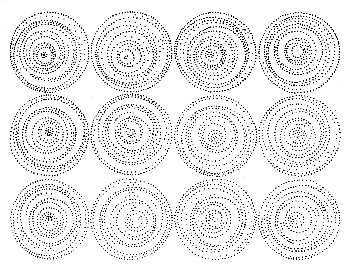
In the West, various researchers have examined them, including Sir Isacc Newton, Hermann von Helmholtz, Immanuel Hermann Fichte, and others.
In 1810, Johann Wolfgang Goethe, who christened phosphenes with their subjective-halo moniker, wrote of them in his Treatise on Colour, following Descartes' descriptions of them.
(One would have hoped Descartes, playing around with them, would have realized sum ergo sum, I am, therefore I am. Had he, Western philosophy may have taken a different turn.)
Some have compared the throbbing, swirling richness of Vincent Van Gogh's nocturnal palette to the forms engendered by phosphene sensitivity.
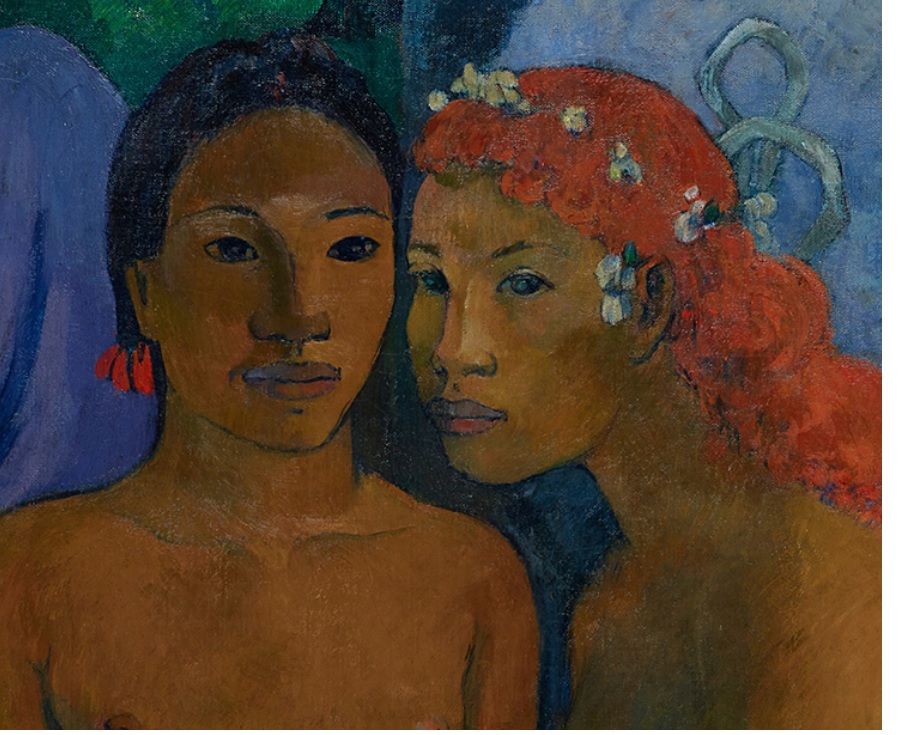
In the same era, van Gogh's acquaintance Paul Gauguin wrote, "I shut my eyes in order to see."
Click here for a helpful site on the medical aspects of phosphene perception.
In my presentation of this verse, I have erred on the side of caution, and science. Although Swami Lakshmanjoo, in his commentary on and translation of this verse, recommends pressing the eyeballs to stimulate phosphenes, modern medical science strongly warns against that, for rubbing one's eyes can cause permanent damage to these delicate structures.
If we ask any eye doctor, we will learn that pressing our eyes can quite seriously damage and/or infect them. So I strongly advise against pressing your dear eyes in order to cause phosphenes to appear.
This means setting aside any interpretation of this verse that advises producing phosphenes in that manner.
Luckily, we have wisdom, art, science, and history, all on the side of caution.
Wisdom advises us that the goal of this scripture is our recognition of ourselves as Divine Awareness and that sound, rather than sight, is the sense closest to the Absolute.
So it is more comfortable and efficient to dive into the Absolute from the platform of mantra rather than the platform of a perturbed sense of sight.
Thus, if our aim is to fulfill the purpose of this scripture, it is best just to devote ourselves to the refind impulses of our mantra.
See: The Essence of Mantra: by Swami Lakshmanjoo Academy
Art also comes to our rescue, for one of the major roles of art is to mediate between harsh reality (in other words, the fact that pressing the eyeballs can easily cause serious damage) and our desire to behold ultimate beauty.
Luckily, there is this somewhat beautiful, short, and compensatory little animation that points to the essence of this verse:
Take note of the heartbeat-like pulse throughout the film.
In the film, the path of phosphenes leads the protagonist from her, dry, drab, repetitive existence into a new, omnipresent, almost Hiranyagarbha-like field of light.
You will notice, also, that she needs not press her eyeballs.
With our dedication to meditation, the light we begin to see and the hum we begin hearing within, when transcending, is Light with a capital L, abiding within our spiritual eye rather than our physical eyes.
When we open to that refined level of perception, inside, we also open to that same luminous level outside.
We begin to become more and more fully acquainted with this Light when we have firmly established the fourth major state of consciousness: Turiya (the Fourth state of consciousness, from which the Waking, Deep Sleep, and Dreaming states arise).
When the Fourth major state of consciousness becomes firmly established subjectively, we begin the process of appreciating the worlds of the senses in increasingly refined values.
When we are living Infinity within ourselves, we naturally want to live Infinity through our senses also: to experience all of existence "inner" and "outer" in its Supreme Oneness value of Shoreless Awareness.
So, naturally, before we begin cognizing the "outer" world in its infinite values, we begin cognizing it in finer and finer values, until the Supreme Relative value is cognized as the Light Consciousness.
From there, it is just one small step into the nondual wholeness of Unity.
Such is the Light this verse wants us to see.
So we must be prudent and realize that modern medicine has good advice to offer on how to treat our eyes. Our dear predecessors simply did not have this medical knowledge.
▼▼⛛▼⛛▼▼
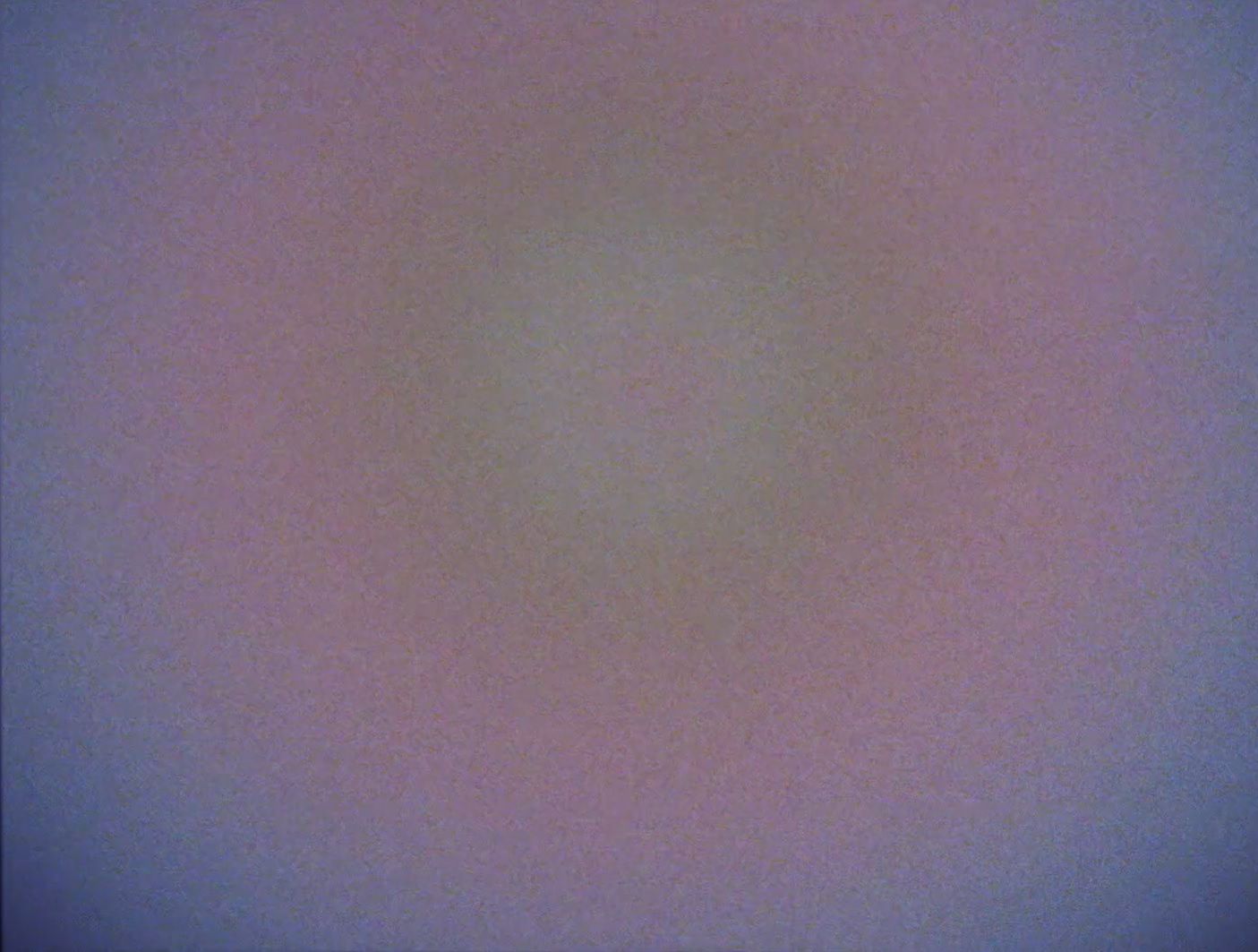
I should mention in more depth that in some schools of Buddhism, phosphenes are known as nimitta: something to be burnt up through meditation.
From Wikipedia:
Dark retreat
Dark retreat (Wylie: mun mtshams[1]) is a spiritual retreat in a space completely absent of light, which is an advanced practice of Tibetan Buddhism and Bön.[2]
Overview
The dark retreat environment of the Bon religion is particularly conducive to the practice of certain visionary yogas (such as the “six-limbed yoga” of Kalacakra and the Dzogchen practice of Thögal for the attainment of the Rainbow Body), which according to Hatchell are "techniques that lead to the experience of spontaneously arising visual experiences, which are said to occur without deliberate effort or conceptual imagination, and which appear before the practitioner’s eyes."
According to Hatchell, the Kalacakra system's six yogas:
instruct the yogi to spend lengthy periods either gazing at the blank sky or residing in a dark room specially prepared to seal out all light. Both of these are forms of sensory deprivation and result in a series of unstructured appearances of light—like sparks, fireflies, and so forth—that ultimately coalesce into a vision of deities, or the appearance of a luminous goddess known as the Great Seal (mahamudra, phyag rgya chen mo).
Regarding the Dzogchen tradition of visionary practice, Hatchell writes:
While the Great Perfection contains a diversity of visionary yogas, their basic format bears many similarities to Kalacakra’s six yogas: an organizing theme of dark and light, the use of dark-retreat and sky-gazing, a sequence of visions that progresses from unstructured spots of light to encounters with fully formed deities, and a tendency to use these visions as the basis for philosophical discussion.
Hatchell notes that there are major differences between the Kalachakra and Dzogchen systems, including different "preliminary practices that prepare the yogi for vision" and "the details and sequences of the main practices" are also different. Also, Dzogchen "presents a unique system of luminous energy channels that traverse the body’s interior and give rise to vision, a feature that is absent in Kalacakra."
The dark retreat practice is discussed in the various Kalachakra works, such as the Stainless Light Commentary. It is also discussed in the Dzogchen tantra titled Tantra of the Blazing Lamps (sgron ma 'bar ba’i rgyud), one of the Seventeen Tantras. Similar practices are also discussed in the Advice on the Six Lamps and its commentary by Drugom Gyalwa Yungdrung, which are part of Bon religion.
The time period dedicated to dark retreat varies from a few hours to decades. Dark retreat in the Himalayan tradition is a restricted practice only to be engaged by the senior spiritual practitioner under appropriate spiritual guidance. This practice is considered conducive for navigating the bardo at the time of death and for realizing the rainbow body.
The traditional dark retreat requires stability in the natural state and is only suitable for advanced practitioners. Ayu Khandro and Dilgo Khyentse are examples of modern, if not contemporary, practitioners of significant periods of dark retreat sadhana. Ayu Khandro performed the Yang-Ti (Tibetan), an advanced practice of the Dzogchen Upadesha, a version of the Dark Retreat.
▼▼⛛▼⛛▼▼
Mālinīvijayottaratantra also delves into meditations on light.
▼▼⛛▼⛛▼▼
Dreamed up by a group of 20th-ceutnry lotus eaters, the Dreammachine was a Bohemian attempt to simulate phosphene-like visions by means of flickering light.
For some, especially children, this may lead to seizures, however. So again, I suggest leaving such playthings aside and sticking to your mantra.
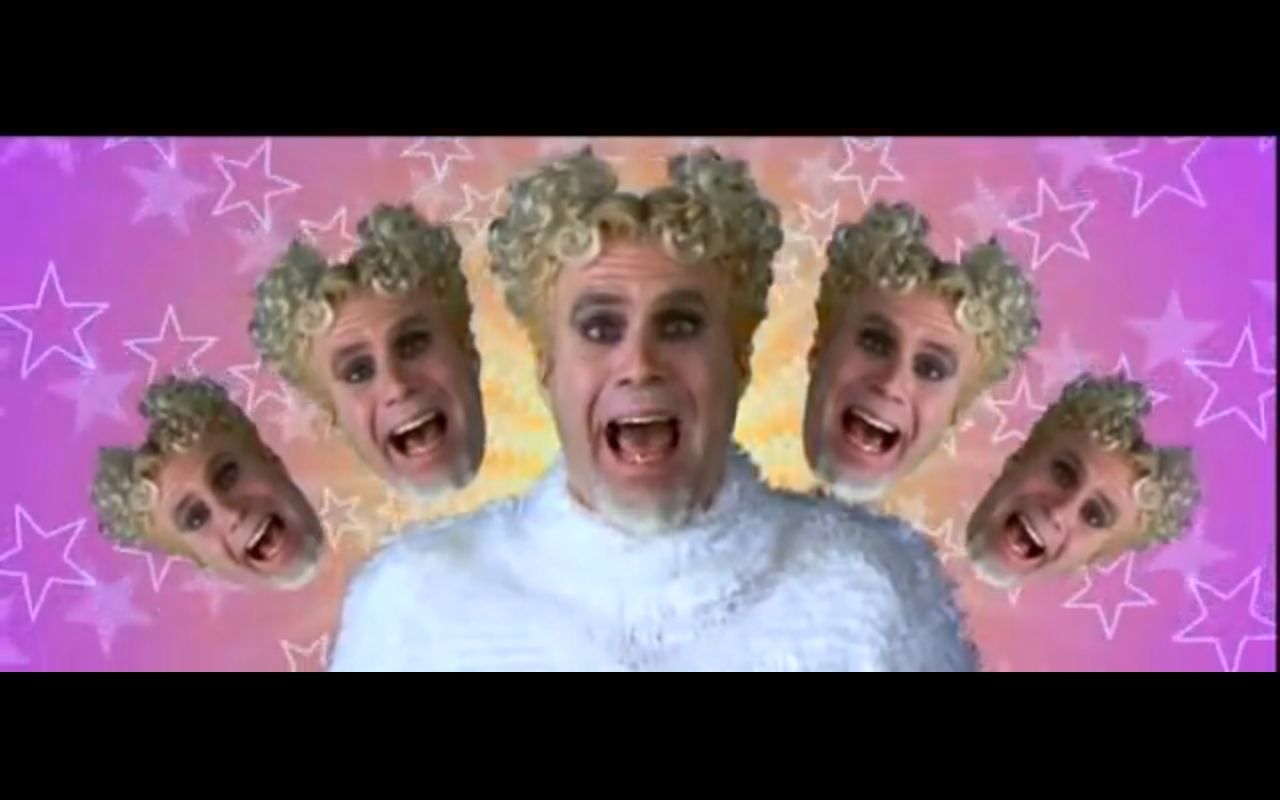
A capitalist satire on capitalism, Ben Stiller's Zoolander features what seems a parody of the Dreammachine, but with which an evil fashion magnate tries to brainwash the film's titular hero, played by Stiller.

Stiller's "Dream Machine" paints the same geometrical items as seen in phosphenes: spirals, stars, and mandala-like images.
(The film, then, unknowingly serves the role of a morality play about what can happen when elements of ancient wisdom traditions go NY-capitalist tech.)
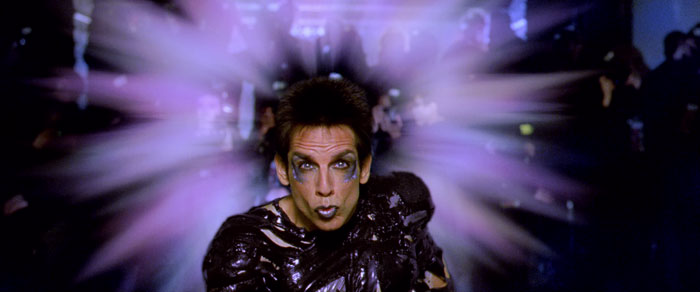
With a little help from his friends, though, Zoolander deploys his never-before-unsheathed power, Magnum, to foil the evil magnate's plan. This enables him to save the day and, of course, get the girl.
Against a backdrop of the continuous hum of swells whitening on a coral reef,

Paul Gauguin, "shutting his eyes in order to see."
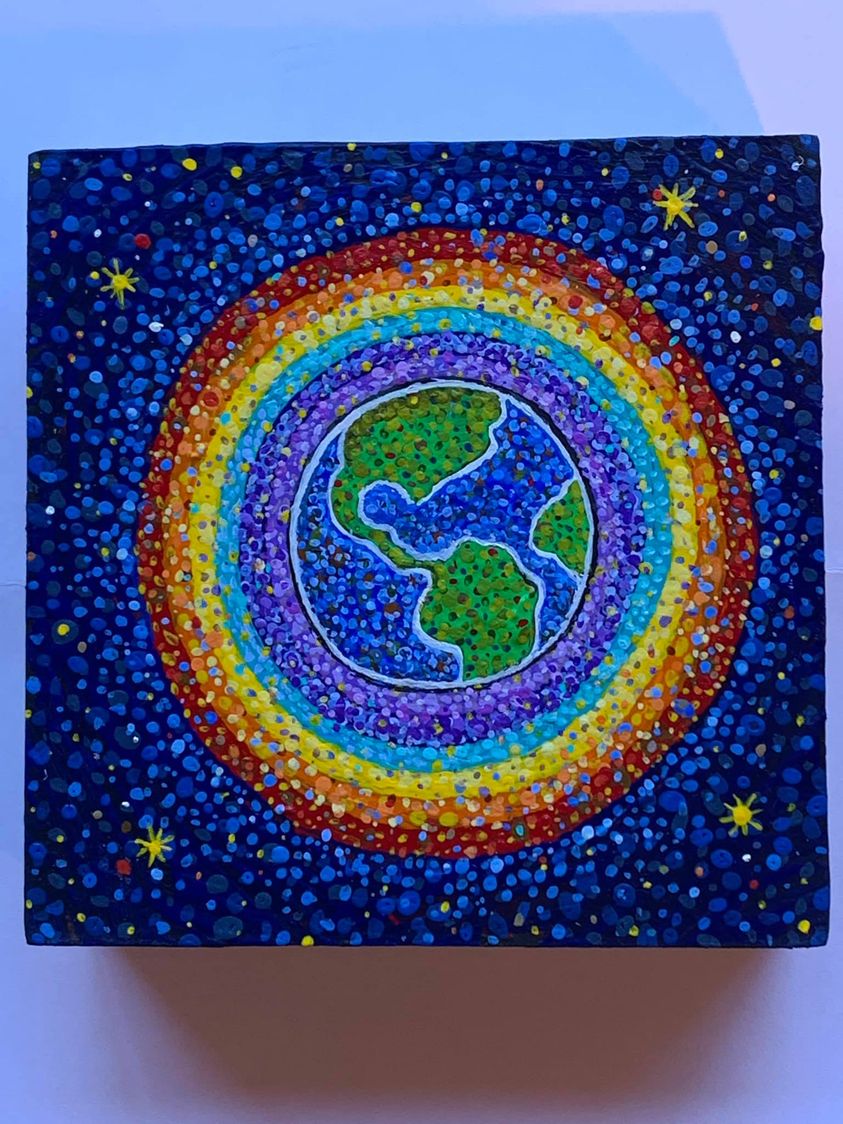
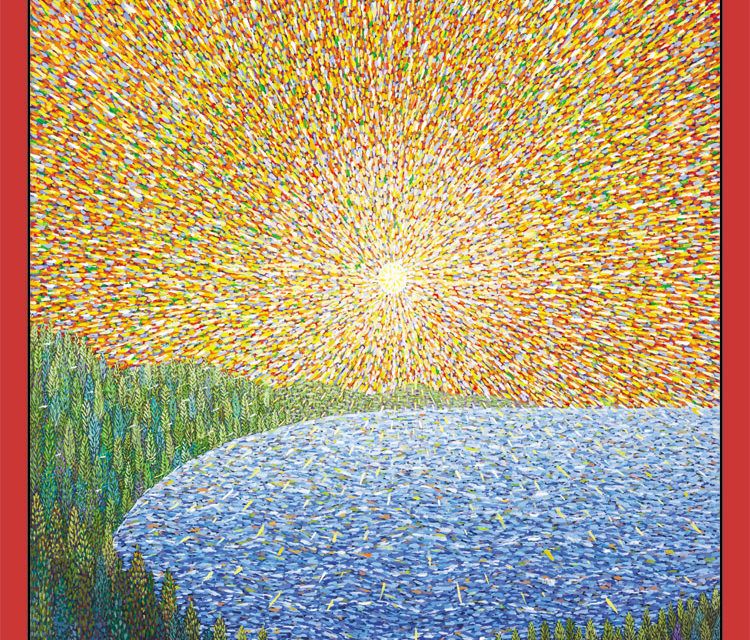

To enable his commentary on this scripture to endure down through the ages, Swami Lakshmanjoo left it in two forms:
(i) a series of videos gracing each verse, which over a few years, John Hughes of the Lakshmanjoo Academy recorded, and
(ii) Swami Lakshmanjoo's textual embodiment of the tapes, The Manual for Self-Realization: 112 Meditations of the Vijñāna Bhairava Tantra (edited by John Hughes).
Both are treasures! In each, Swamiji comments on the scripture while responding to questions from his students. Swamiji emphasizes that the video version transmits his teaching with a higher level of fidelity.
